Lohagad is one of the strongest hilltop forts near Lonavala in Maharashtra. The architectural marvel of Lonavala has served as a crucial military base for many kindoms before it went under Maratha and British Empire. Lohagad Fort is also a very popular destination for history enthusiasts. Located on the Sahyadri ranges, the fort acts as a divider between the Indrayani and Pavna river basins.
The name Lohagad arrived from two words – ‘Loha’ means iron whereas ‘Gad’ means fort. Lohagad Fort has three giant and immensely strong iron gates, probably are the origin of the fort’s name. The fortress is therefore popular as Lonavala Iron Fort as well.
Lohagad Fort rises at a height of 1,033 meters (3,389 feet) above sea level. The scenic beauty of the fort make it a best trekking place in monsoon near Pune and Lonavala. The fort connects to neiboring Visapur Fort by a small range. Visapur and Lohagad forts later represnted a joint fortification to strengthen the protection of Lohagad, the treasury of Maratha Empire.
Lohagad Fort counts even among the oldest forts in India. Major constructions of the fort looks from the medival period. But traces of ancient Indian clan Satavaha who ruled during 3rd century BCE, also discovered inside the fort. Therefore, many historians believe that the initial fortification of Lohagad might have started 2,300 years ago.
Early history of Lohagad Fort
Early history of Lohagad Fort is quite uncertain. The Brahmi inscription, discovered from a cave of the fort cliff in 2019, confirms the fort existed during second or first century BCE. Unfortunately, the oldest inscription of Lohagad doesn’t carry any information on the fort’s foundation.
Many historians claim that fortification may have started during Satvahanas reign. However, many historians differ from theory as well. Some portion of Lohagad Fort may be 2,300 years old. But the fort boundary walls and other major constructions are definitely not more than few hundred years.
The hill fort of Lohagad had actually undergone many refurbishments, at least in past 600 years. Hence, determining actual founder of Lohagad fort is still unrevealed today.

The Lohagad area belonged to the territory of Deccan, which had gone through several political transformations. Accordingly, the hill fort of Lohagad, having high strategical importance and geographical advantage, went under several owners.
Early rulers
The Deccan region had been under the rule of the Chalukyas (6-12 century CE), Rashtrakutas (753-982 CE). Later, the Yadava (1187-1317 CE) and Bahmani dynasty (1347-1527 CE) had also reigned over the region. Hence, Lohagad Fort also went through several changes of hands during its early history.
Nizam Shahi rule
In 1490 CE, Malik Nizam Shah founded Nizam Shahi Sultanate in Ahmednagar. Soon Nizam Shah started expanding his territory when Lohgad and few other forts near Pune region came under Nizam Shahi Sultanate. For over a century since then the fort of Lohgad remained under Nizam Shahi Sultanate. In 1636, forces of Mughal Emperor Aurangzeb defeated Shahaji Bhonsale, the military commander of last Nizam Shahi ruler Murtaza Nizam Shah III.
Mughal and Shivaji era
Major fortification of the fort were probably done by the Mughals. For the next few years the fort of Lohagad remained under Mughal Empire.
In 1648, Chattrapati Shivaji took Lohagad fort under his control from the Mughals. However, he could not maintain the control for too long. In 1665, Shivaji lost the battle of Purandar to Jai Singh I, commander of the Mughals. It forced him to sign the treaty of Purandar and surrendered 23 forts including Purandar and Lohagad fort to the Mughals.
Shivaji however did not give up but continued strengthening his army. Finally in 1670, Shivaji’s successful conquest over the Mughals brought him back all 23 forts near Pune including Lohagad.
Lohagad fort had another importance. It served as treasury of Shivaji which he plundered from Surat.
Late history of Lohagad Fort: Peshwa control
From 1720, Peshwa took control of Lohagad fort. Since then it remained under Marathas’ control for almost a century.
Nana Fadnavis took charge in 1770 and ordered major reconstructions of the fort. During the of period of Nana Fadnavis, several water tanks and a step well were built inside the fort. Dhondopant Nisture was eventually given control of the fort by Nana. Nana fortified the fort in 1789. He also carved an inscription indicating that in 1711, made a baw from Bajichat under the supervision of Dhondo Ballal Nitsure.
Nana shifted all of his treasures to Lohagad under Nitsurya’s supervision. In 1803, the British conquered the fort, but it was afterwards regained by another Bajirao II.
British control
The British always had the eyes on Maratha treasures, kept at Lohagad Fort. But strong fortification of Lohagad made it really difficult for them. They made several attempts but failed.
The fortress of Visapur, also known as twin fort of Lohagad, appeared at the higher altitude. The British brought heavy artillery guns to capture the Visapur fort first.
Capturing Visapur made the job easy for them. They set their artillery guns and started bombarding heavily on Lohagad. The Maratha soldiers didn’t have any answer to British heavy artillery at that time. Peshwa Bajirao II ordered the Marathas to evacuate the fort.
General Prother arrived on March 4, 1818, to seize Lohgad fort from the Marathas. The British utilized the fort until 1845 and then deserted the fort.
Lohagad Fort architecture
Lohagad Fort has a strong stonemason work appear in its structures,with glimpses of ancient Indian architecture. Arguably, few historians believe it as an Iron Age Architecture. Lohagad Fort was built of granite stones cut from the same hills. Use of lime stones are visible in the bonding works in between the stones. The initial fortified structure was fairly simple with very few structures in it. Many rock cut caves of Iron Ages are found which may have used as living places.
Major developments was probably done during Mughal reign during 17th century. However, several new structures were added during later period of Peshwas rule like the big tank and the step well.
The western side of the Fort consists of a structure similar to Scorpions tail which houses a cliff of 300 feet height at the beginning. It further leads to a gateway having an arched structure with a height of 150 feet that serves as the entrance of the local villages.
Entry gates
The fort has four strong entrances namely Ganesh Darwaja, Narayan Darwaja, Hanuman Darwaja, and Maha Darwaja.
All four gates follow Mughal architecture and made of iron. Ganesh gate is supported by elephant statues and the probably the first addition made by Nana Fadnavis to the fort. The interior of the Ganesh gate houses a broken shrine of Ganapati.

According to a famous folktale, Nana Fadnavis found it difficult to finish the construction of Ganesh Darwaja for its poor foundation. He had to impress the god of the hill. It was possible only if they bury a couple alive. A Maratha family from Sabale clan came forward to offer their eldest son and his wife. A big hole was dug accordingly, and the two were buried alive in the hole.
Narayana gate, another Nana Fadnavis addition, houses shrine of Goddess Parvati postured in crossed legs.

The Hanuman gate consists of stone carved broken image of Lord Hanuman. It is the oldest gate of the fort and once used as the main entrance. The construction of Hanuman gate took place during late 17th century by the Mughals, possibly by Aurangzeb.
Lohagad fort Main Gate is another Nana Fadnavis addition built around 1789. It is the largest gateway among all four gates. The gate also has small court with a guard room which are all ruined now.

Rock cut caves
The fort houses a series of rock cut caves on the eastern side side of the fort. One of these caves (right one in the image below) were deliberately used by the Maratha rulers for keeping treasury. Earlier, Shivaji Maharaj used to keep his treasures looted from Surat at Lohagad fort. Historical evidences also say that Nana Fadnavis had used this forts as a treasury.

Tourist spot: trekking to Lohagad fort
Hill top location with all greeneries around, makes Lohagad fort a famous tourist spot near Pune and Lonavala. Trekking to Lohagad fort is something that you must not miss, especially during the monsoon. Thousands of visitors from Mumbai and Pune choose to trek Lohagad Fort during the monsoon. The weather during monsoon is very pleasant, makes trekking easier.
The trekking route is quite easy and suitable for visitors of all ages and types. If you want to trek only in the fort area, best option is to drive till the base village and have a direct entry to the stone steps of the fort. For longer trekking route option, start from Bhaja Village, walk up to Gomukh Khand and then you have two options. You’ll have Lohagad fort on your right and Bijapur fort on the left.
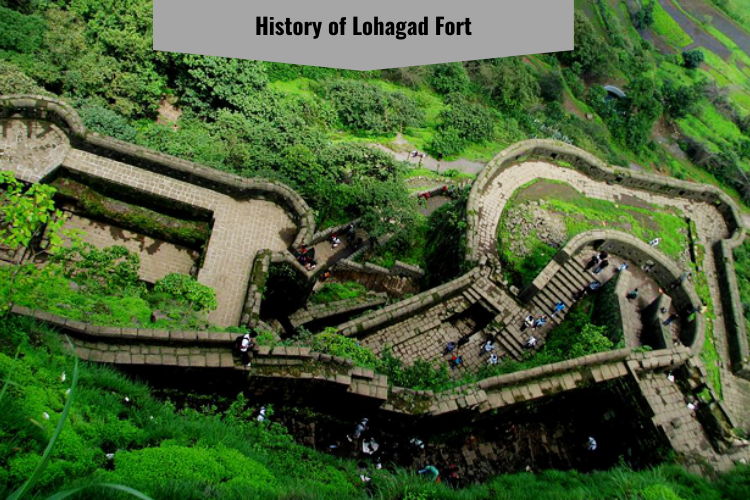
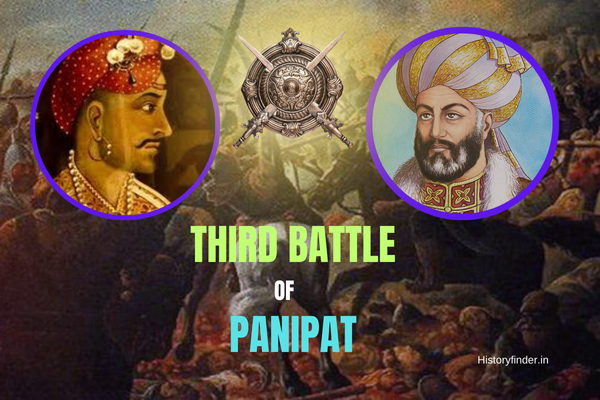
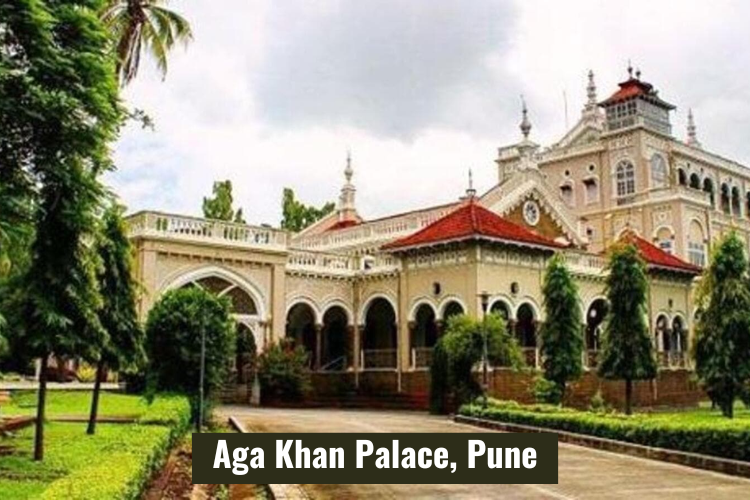
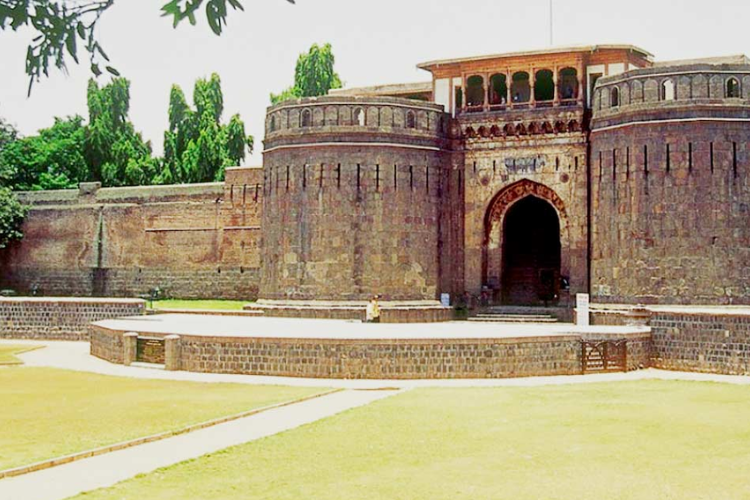
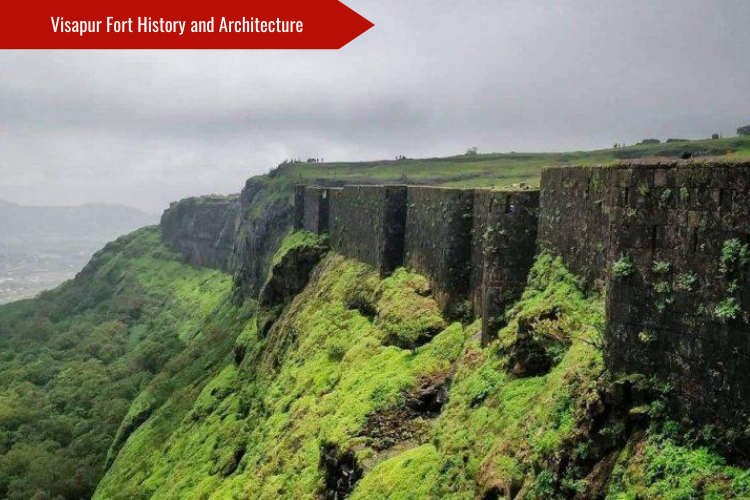
Pingback: Visapur Fort History and Ruined Architecture - History Finder